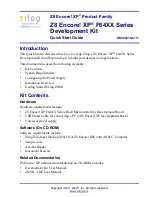
Design Considerations
AN64846 - Getting Started with CapSense
®
Doc. No. 001-64846 Rev. *X
40
3.1.2 Overlay Thickness
Sensitivity is inversely proportional to overlay thickness, as illustrated in
Figure 3-1. Sensitivity Versus Overlay Thickness
Both signal and noise are affected by the overlay properties.
lists the recommended maximum overlay
thicknesses for PSoC CapSense applications with an acrylic overlay material.
Table 3-2. Maximum Overlay Thickness with an Acrylic Overlay Material
Design Element
Max. Overlay Thickness (mm)
Button
5
Slider
5
Touchpad
0.5
3.1.3 Overlay Adhesives
Overlay materials must have good mechanical contact with the sensing PCB. This is achieved using a nonconductive
adhesive film. This film increases the sensitivity of the system by eliminating any air gaps between overlay and the
sensor pads. 3M™ makes a high-performance acrylic adhesive called 200MP that is widely used in CapSense
applications in the form of adhesive transfer tape (product numbers 467MP and 468MP).
3.2 ESD Protection
Robust ESD tolerance is a natural byproduct of a thoughtful system design. By considering how contact discharge will
occur in your end-product, particularly in your user interface, it is possible to withstand an 18-kV discharge event without
any damage to the CapSense controller.
Table 3-3. Overlay Material Dielectric Strength
Material
Breakdown Voltage
(V/mm)
Min. Overlay Thickness
at 12 kV (mm)
Air
1200
–2800
10
Wood
– dry
3900
3
Glass
– common
7900
1.5
Glass
– Borosilicate (Pyrex
®
)
13,000
0.9
PMMA Plastic (Plexiglass)
13,000
0.9
ABS
16,000
0.8
Polycarbonate (Lexan)
16,000
0.8
Formica
18,000
0.7
FR-4
28,000
0.4
PET Film (Mylar)
280,000
0.04
Polymide film (Kapton
®
)
290,000
0.04
















































